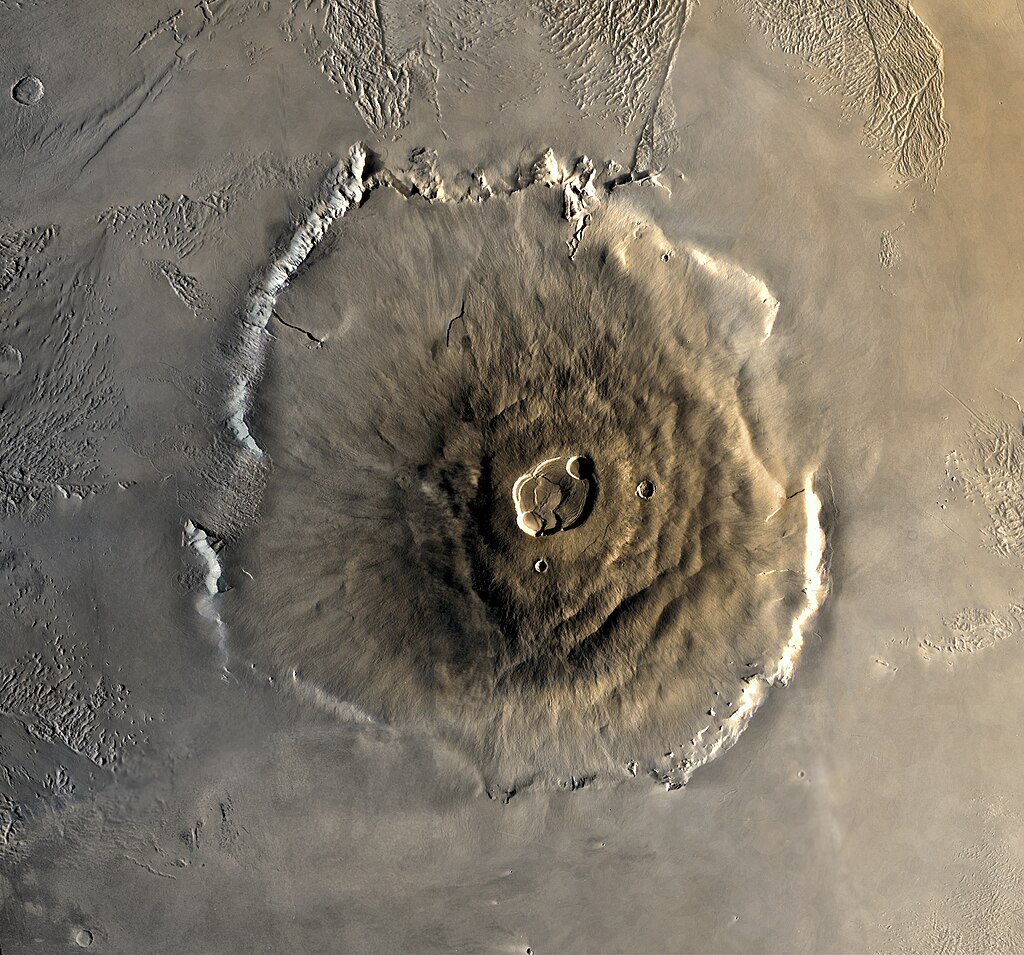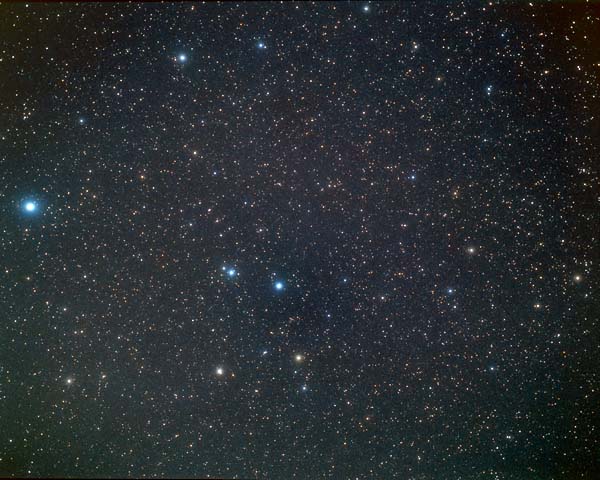Page 1 of 1
APOD: Jupiter Season, Hawaiian Sky (2018 Jun 02)
Posted: Sat Jun 02, 2018 4:11 am
by APOD Robot
[img]https://apod.nasa.gov/apod/calendar/S_180602.jpg[/img] Jupiter Season, Hawaiian Sky
Explanation: Volcanic activity on the Big Island of Hawaii has increased since this Hawaiian night skyscape was recorded earlier this year.
Recent vents and lava flows are about 30 kilometers to the east, the direction of the blowing smoke and steam in the panoramic view of the Kilauea caldera with Halemaumau crater taken from
Volcanoes National Park. Still, this year
Jupiter is bright in late spring to early summer skies. High in the south it is easily the brightest celestial beacon in the scene where the central bulge of the Milky Way seems to rise above vapors and clouds. Yellowish Antares is the bright star near the end of the
dark rivers of dust seen toward the center of our galaxy. Near the horizon, stars Alpha and Beta Centauri and the compact
Southern Cross shine through the almost too bright volcanic smoke.
Re: APOD: Jupiter Season, Hawaiian Sky (2018 Jun 02)
Posted: Sat Jun 02, 2018 5:58 am
by Confused
I have been watching the cameras of the caldera in the
HVO Webcams and I am nearly certain that there has not yet (this year) been lava from the caldera. Is that right? I know there is lava
in the caldera but there has been no lava flowing
from it, right?
The news talks about fissures and I see articles also that talk about fissures; I think
fissures is more common than
vents, but that is a minor detail.
The following might be off-topic for here; I apologize if it is. I know that Loihi Seamount is a volcano but what about
Wini Seamount? It is getting close to sea level but I can't find anything saying it is a volcano.
Re: APOD: Jupiter Season, Hawaiian Sky (2018 Jun 02)
Posted: Sat Jun 02, 2018 7:03 am
by Robert Nufer
The positions of Jupiter, Mars, and Saturn in the image lead to the assumption, that the imaged was taken between January 29 and 31, early this year. (There was a total lunar eclipse on January 29, 2018.)
When we were at Volcano, HI, during daytime almost no volcatic activity was visible, except some vapour clouds from within Kilauea's caldera. How can this APOD be explained?
Thank you,
Robert
Re: APOD: Jupiter Season, Hawaiian Sky (2018 Jun 02)
Posted: Sat Jun 02, 2018 9:22 am
by canopia
Thank you Robert. Yes, I photographed this panorama in the morning of 29th January 2018; from Steam Vents in Kilauea. From March 2008 to May 2018, there was a lava lake in Halema'uma'u crater, which produced smoke and water vapour. This vapour-smoke mixture was lit by the lava lake below, making it shine in dark, but not during daytime. - After the changes in Kilauea's volcanic activity in May 2018, now the crater appears empty according to views from a drone flight.
PS. I photographed the total lunar eclipse of 31st January 2018 from Kilauea as well.
 http://antwrp.gsfc.nasa.gov/apod/ap180203.html
https://www.flickr.com/photos/ttezel/38824622800
http://antwrp.gsfc.nasa.gov/apod/ap180203.html
https://www.flickr.com/photos/ttezel/38824622800
Tunç Tezel
http://www.twanight.org
Re: APOD: Jupiter Season, Hawaiian Sky (2018 Jun 02)
Posted: Sat Jun 02, 2018 9:24 am
by Boomer12k
Maybe Pele likes Jupiter?
My Jupiter and 4 Moons from several weeks ago...brightened up to see the moons.
:---[===] *
Re: APOD: Jupiter Season, Hawaiian Sky (2018 Jun 02)
Posted: Sat Jun 02, 2018 12:38 pm
by orin stepanek
Volcano picture is awesome!

Re: APOD: Jupiter Season, Hawaiian Sky (2018 Jun 02)
Posted: Sat Jun 02, 2018 1:40 pm
by neufer
https://en.wikipedia.org/wiki/Olympus_Mons wrote:
<<Olympus Mons is a very large shield volcano on the planet Mars. By one measure, it has a height of nearly 25 km ... about two and a half times as tall as Mount Everest's height above sea level. It is the youngest of the large volcanoes on Mars, having formed during Mars's Hesperian Period. It is currently the largest volcano discovered in the Solar System and had been known to astronomers since the late 19th century as the albedo feature Nix Olympica (Latin for "Olympic Snow"). Its mountainous nature was suspected well before space probes confirmed its identity as a mountain.
As a shield volcano, Olympus Mons resembles the shape of the large volcanoes making up the Hawaiian Islands. The volcano's outer edge consists of an escarpment, or cliff, up to 8 km tall, a feature unique among the shield volcanoes of Mars. Being a shield volcano, Olympus Mons has a very gently sloping profile. The average slope on the volcano's flanks is only 5°. Because of the size of Olympus Mons and its shallow slopes, an observer standing on the Martian surface would be unable to view the entire profile of the volcano, even from a great distance. The curvature of the planet and the volcano itself would obscure such a synoptic view. Similarly, an observer near the summit would be unaware of standing on a very high mountain, as the slope of the volcano would extend far beyond the horizon, a mere 3 kilometers away.
The extraordinary size of Olympus Mons is likely because Mars lacks mobile tectonic plates. Unlike on Earth, the crust of Mars remains fixed over a stationary hotspot, and a volcano can continue to discharge lava until it reaches an enormous height. Like the basalt volcanoes on Earth, Martian basaltic volcanoes are capable of erupting enormous quantities of ash. The basalt found on Earth and Mars are very similar in composition. Due to the gravity on Mars, there are less buoyant forces on the magma rising out of the crust. Also, the magma chambers are thought to be much larger and deeper than the ones found on Earth.
Re: APOD: Jupiter Season, Hawaiian Sky (2018 Jun 02)
Posted: Sat Jun 02, 2018 4:32 pm
by Hansen
Corvus beams out in the picture too. (Upper right center)
Re: APOD: Jupiter Season, Hawaiian Sky (2018 Jun 02)
Posted: Sat Jun 02, 2018 5:19 pm
by neufer
Hansen wrote: ↑Sat Jun 02, 2018 4:32 pm
Corvus beams out in the picture too. (Upper right center)
https://en.wikipedia.org/wiki/Hawaiian_crow wrote:
.
<<The Hawaiian crow or ʻalalā (Corvus hawaiiensis) is a species of bird in the crow family, Corvidae, that is currently extinct in the wild, though reintroduction programs are underway. Before the Hawaiian crow became extinct in the wild, the species was found only in the western and southeastern parts of Hawaii. It inhabited dry and mesic forests on the slopes of Mauna Loa and Hualālai at elevations of 3,000 to 6,000 feet. Extensive understory cover was necessary to protect the 'alala from predation by the Hawaiian Hawk, or ʻio (Buteo solitarius). Nesting sites of the ‘alala received 600–2,500 millimetres of annual rainfall. Fossil remains indicate that the Hawaiian crow used to be relatively abundant on all the main islands of Hawaii, along with four other extinct crow species.
The species is known for strong flying ability and resourcefulness, and the reasons for its extirpation are not fully understood. It is thought that introduced diseases, such as Toxoplasma gondii, avian malaria, and fowlpox, were probably a significant factor in the species' decline. The Hawaiian crow was also preyed on by rats and the small Asian mongooses. Feral cats that introduced Toxoplasma gondii to the birds can also prey on chicks that are unable to fly. As of 2012, the Hawaiian crow's population is 114 birds, the vast majority of which are in Hawaiian reserves. The Hawaiian crow is considered the most endangered of the family Corvidae. They are recorded to have lived up to 18 years in the wild, and 28 years in captivity. Some Native Hawaiians consider the Hawaiian crow an ʻaumakua (family god).>>
Re: APOD: Jupiter Season, Hawaiian Sky (2018 Jun 02)
Posted: Sat Jun 02, 2018 6:33 pm
by Ann
neufer wrote: ↑Sat Jun 02, 2018 5:19 pm
Hansen wrote: ↑Sat Jun 02, 2018 4:32 pm
Corvus beams out in the picture too. (Upper right center)
https://en.wikipedia.org/wiki/Hawaiian_crow wrote:
.
<<The Hawaiian crow or ʻalalā (Corvus hawaiiensis) is a species of bird in the crow family, Corvidae, that is currently extinct in the wild, though reintroduction programs are underway. Before the Hawaiian crow became extinct in the wild, the species was found only in the western and southeastern parts of Hawaii. It inhabited dry and mesic forests on the slopes of Mauna Loa and Hualālai at elevations of 3,000 to 6,000 feet. Extensive understory cover was necessary to protect the 'alala from predation by the Hawaiian Hawk, or ʻio (Buteo solitarius). Nesting sites of the ‘alala received 600–2,500 millimetres of annual rainfall. Fossil remains indicate that the Hawaiian crow used to be relatively abundant on all the main islands of Hawaii, along with four other extinct crow species.
The species is known for strong flying ability and resourcefulness, and the reasons for its extirpation are not fully understood. It is thought that introduced diseases, such as Toxoplasma gondii, avian malaria, and fowlpox, were probably a significant factor in the species' decline. The Hawaiian crow was also preyed on by rats and the small Asian mongooses. Feral cats that introduced Toxoplasma gondii to the birds can also prey on chicks that are unable to fly. As of 2012, the Hawaiian crow's population is 114 birds, the vast majority of which are in Hawaiian reserves. The Hawaiian crow is considered the most endangered of the family Corvidae. They are recorded to have lived up to 18 years in the wild, and 28 years in captivity. Some Native Hawaiians consider the Hawaiian crow an ʻaumakua (family god).>>
There are three blue crows in constellation Corvus.

Constellation Corvus (near center) with blue stars Delta and Gamma.
Fifth magnitude blue B-type star HD 104337 forms a triangle with bright Delta
and orange Epsilon. Photo: David Malin.
Three azure jays of the Corvidae family.
Copyright: Fernando Farias.
Re: APOD: Jupiter Season, Hawaiian Sky (2018 Jun 02)
Posted: Sat Jun 02, 2018 9:01 pm
by Catalina
neufer wrote: ↑Sat Jun 02, 2018 1:40 pm
As a shield volcano, Olympus Mons resembles the shape of the large volcanoes making up the Hawaiian Islands. The volcano's outer edge consists of an escarpment, or cliff, up to 8 km tall, a feature unique among the shield volcanoes of Mars.
What is the theory behind these cliffs? Erosion by wind and/or water or?
Re: APOD: Jupiter Season, Hawaiian Sky (2018 Jun 02)
Posted: Sat Jun 02, 2018 9:38 pm
by neufer
Catalina wrote: ↑Sat Jun 02, 2018 9:01 pm
neufer wrote: ↑Sat Jun 02, 2018 1:40 pm
As a shield volcano, Olympus Mons resembles the shape of the large volcanoes making up the Hawaiian Islands. The volcano's outer edge consists of an escarpment, or cliff, up to 8 km tall, a feature unique among the shield volcanoes of Mars.
What is the theory behind these cliffs? Erosion by wind and/or water or?
https://www.nasa.gov/mission_pages/MRO/multimedia/pia12992.html wrote:
.

<<The High Resolution Imaging Science Experiment (HiRISE) camera on NASA's Mars Reconnaissance Orbiter recorded this (~1 kilometer wide) image on March 2, 2010. The image covers the northern edge of the largest volcano in the solar system, Olympus Mons on Mars. The margin of Olympus Mons is defined by a massive cliff many kilometers tall. At this location, it is nearly 7 kilometers tall.
The cliff exposes the guts of the volcano, revealing interbedded hard and soft layers. The hard layers are lava and the soft layers may be dust (from large dust storms) or volcanic ash.
Most scientists think the the cliffs formed by landslides. This collapse is driven by the weight of the huge volcano exceeding the strength of the rocks it is built of.>>
Neufer's Mattress



